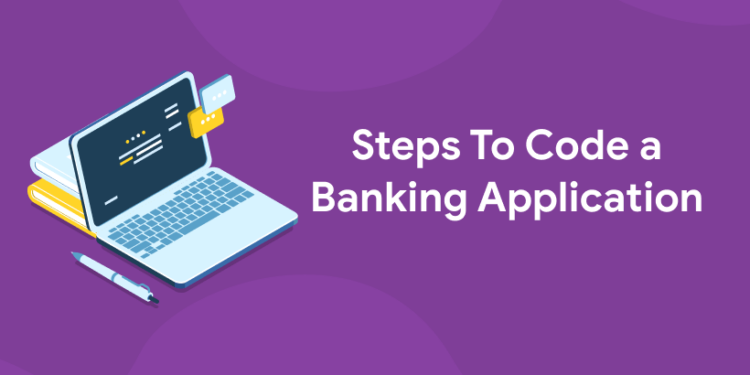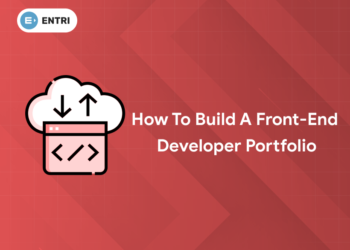Table of Contents
If you’re looking to code your own banking application, there are several steps you’ll need to follow in order to do so successfully. This article will provide the eight steps that you need to take in order to write an application that will interface with your bank and provide you with access to all of your financial data and transfer capabilities as well. Read on to learn more about how you can use these eight steps to code your own banking application today!
Get the latest updates on coding courses in the Entri app
Step 1: Getting Started
Before you even start to develop your application, it’s important to make sure you know what users will want to do with it. There are many ways to collect user feedback, but focus groups and surveys can be particularly effective in helping people think through their banking pain points. Make sure you schedule at least three focus groups in which 20-30 individuals will participate. It’s also wise to ask customers if they have any friends or colleagues who they would feel comfortable asking for feedback as well. If possible, try asking customers what features they like and dislike about their current bank or financial institution and why they decided to use that particular service provider over another one.
To know more about android development in the Entri app
Step 2: Create the Database
1: Which of the following data structures allows elements to be added and removed in a Last-In, First-Out (LIFO) order?
First and foremost, we need to create a database for our application. A relational database is composed of tables with rows (records) and columns (fields). Rows and columns are also called fields and records, respectively. Each row of data or record represents an item or an instance related to some business object like a customer, product, etc. We will be creating 5 tables here to store customer information and transaction information. The following sections detail all these tables in brief. The five tables involved in our example are as follows:
- Customer table: This table will store basic details about each customer like name, age, email address, etc.
- Table 2: Account table: This table will contain basic details such as account number, opening balance amount, etc.
- Table 3: Transaction table: This is where each individual financial transaction done by customers across various accounts would be stored when it happens.
Enroll in our latest data science program and get free placement assistance with the Entri app
Explore Free Coding Courses!
Take your first step toward mastering in-demand skills, acing interviews, and securing top-tier jobs with Entri's free coding courses.
👉 Explore Free Courses NowStep 3: Design the Interface
The main thing about developing for Android is that it can be done in any language. Java, JavaScript, C#, Objective-C—you name it! A lot of coders use Java because its syntax is consistent across mobile and desktop platforms. However, you can make your coding process more efficient by choosing tools that are tailored to your unique needs. The best way to design your app’s interface is with a program called Android Studio. With an emulator attached to your computer, you can play around with how each screen will look before writing a single line of code. Plus, if something doesn’t look quite right on one screen size but looks perfect on another (which happens all the time), changing it takes just seconds.
Get the latest updates on machine learning in the Entri app
Step 4: Add Some Text
Now that you have created your template, it’s time to add some text to it. Double click inside of your Main Page and then type in Hello World! Welcome to our application! In case you were wondering, here is what we are going to build: A Login Page; An About Us Page; And a Purchase Page. So let’s get started! Ready?
- Open Visual Studio…
- Click File->New Project…
- Select New Project from Installed Templates
- Select Windows from the list of available project types
- Double-click WPF Application
- Give your project any name
- Click OK (or press enter) Your next step is to configure your new project and start coding
Step 5: Get Some Data in Your Database
If you’re just getting started with SQL, or if your database has some data in it already, you can skip to Step 6. This is also a good step to return to if you run into problems while trying to run queries later on. The bank database created in Part 1 of Build Your Own Databases contains sample data for three accounts, plus transactions for each account that happened up until last week. If your tables have no data in them yet, you can use one of many online tools that help generate fake but realistic-looking test records for you. These apps can do things like populate a table with customer information, generate random credit card numbers and track those numbers over time, create fake Twitter followers and favorites (in case you need more social proof), and much more. What software should I use? For creating a new banking application (or any software product) don’t write code without testing it first! Software developers call designing software writing code, which means they start coding before they’ve got everything worked out: Scary! They don’t work that way because they’re crazy; they do it because there’s no alternative way to build things quickly.
Get the latest updates on web development in the Entri app
Explore Free Coding Courses!
Take your first step toward mastering in-demand skills, acing interviews, and securing top-tier jobs with Entri's free coding courses.
👉 Explore Free Courses NowStep 6: Do Something with That Data
Ok, now that you have all of that data flowing into your application, what are you going to do with it? Although a CRUD application can work fine for some situations, these types of applications are generally limited in scope and don’t provide much value. A better option is to take that data and put it to use by interacting with other APIs or saving/updating it in an online database (like MongoDB). The more ways you can think of to get value out of your application, the more valuable it will be in terms of providing real value for your users.
Enroll in our latest website development course and get free placement assistance with the Entri app
Step 7. Write the Processing Logic
This is probably where your program will spend most of its time. Here you’ll need to write code that processes data and shows it on screen. Since this is an actual business application, you’ll need to consider security, data integrity, error handling, and other real-world factors like server response times and network latency—it can get complicated. As always, test as much as possible before checking in any code changes. When writing testing scripts, keep in mind that every time you make a change to your program it needs to be tested with both correct and incorrect input so that errors are caught early on instead of at later stages when debugging is more difficult.
Get the latest updates on Java programming in the Entri app
Step 8. Make it Look Good
You’ve gone through all seven steps and created your application. But if you have one thousand lines of code that works, but looks like an eighth-grader wrote it, you’re in trouble. Just because it works doesn’t mean it will work for long. Developers who consistently do good work attract more clients, so look at what you created and make sure that not only does it function well but also looks great. Don’t get too fancy but make sure that everything has a cohesive feel to it and creates an attractive product that doesn’t turn off potential customers with its odd looks. If you are interested to learn new coding skills, the Entri app will help you to acquire them very easily. Entri app is following a structural study plan so that the students can learn very easily. If you don’t have a coding background, it won’t be any problem. You can download the Entri app from the google play store and enroll in your favorite course.












